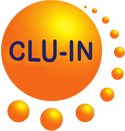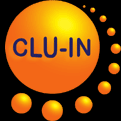Search Result
REMEDIATION OF MERCURY CONTAMINATED SOIL AND BIOLOGICAL MERCURY METHYLATION IN THE LANDSCAPE
Xu, Jingying, Ph.D. dissertation, Uppsala University, Sweden. 58 pp, 2018
Filed Under: Research
Filed Under: Research
In the first part of this study, an evaluation of the potential of soil washing for Hg remediation showed that <1.5% of total Hg was mobilized after combined treatments, suggesting such tight binding of Hg to soil particles as to render soil washing ineffective. In the second part of the study, the boreal forest survey provided some first insights about the possible link between methylmercury (MeHg) formation and non-Hg(II) methylating bacterial communities that likely support the growth and activity of Hg(II) methylating members. Results from wetlands pointed out nutrient status as an important factor shaping Hg(II) methylating communities across the four wetlands, and highlighted a significant role of water content and iron in controlling the distribution of Hg(II) methylators within individual wetlands. Interactions between the Hg(II) methylating groups revealed that the more anaerobic and productive conditions seemed to favor the activity of Methanoregulaceae and hamper the growth of Ruminococcaceae. Results from lake sediments supported that Geobacteraceae have an important role in Hg(II) methylation under ferruginous geochemical conditions. https://uu.diva-portal.org/smash/get/diva2:1189465/FULLTEXT01.pdf
Filed Under: Research
Filed Under: Research
In the first part of this study, an evaluation of the potential of soil washing for Hg remediation showed that <1.5% of total Hg was mobilized after combined treatments, suggesting such tight binding of Hg to soil particles as to render soil washing ineffective. In the second part of the study, the boreal forest survey provided some first insights about the possible link between methylmercury (MeHg) formation and non-Hg(II) methylating bacterial communities that likely support the growth and activity of Hg(II) methylating members. Results from wetlands pointed out nutrient status as an important factor shaping Hg(II) methylating communities across the four wetlands, and highlighted a significant role of water content and iron in controlling the distribution of Hg(II) methylators within individual wetlands. Interactions between the Hg(II) methylating groups revealed that the more anaerobic and productive conditions seemed to favor the activity of Methanoregulaceae and hamper the growth of Ruminococcaceae. Results from lake sediments supported that Geobacteraceae have an important role in Hg(II) methylation under ferruginous geochemical conditions. https://uu.diva-portal.org/smash/get/diva2:1189465/FULLTEXT01.pdf
The Technology Innovation News Survey welcomes your comments and
suggestions, as well as information about errors for correction. Please
contact Michael Adam of the U.S. EPA Office of Superfund and Emergency Management at adam.michael@epa.gov or (703) 603-9915
with any comments, suggestions, or corrections.
Mention of non-EPA documents, presentations, or papers does not constitute a U.S. EPA endorsement of their contents, only an acknowledgment that they exist and may be relevant to the Technology Innovation News Survey audience.




